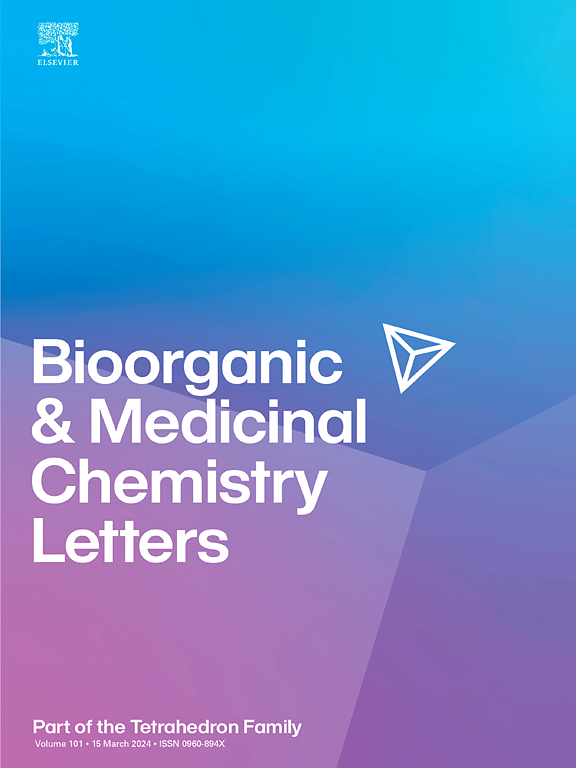发现一种新型无毒的氯法拉滨类似物用于治疗三阴性乳腺癌。
IF 2.2
4区 医学
Q3 CHEMISTRY, MEDICINAL
引用次数: 0
摘要
乳腺癌是世界上第二常见的癌症。三阴性乳腺癌(TNBC)是一种异质性亚型乳腺癌,占所有诊断乳腺癌病例的15- 20% %。化疗是伴有转移性疾病的TNBC患者的标准治疗方案,多聚(adp -核糖)聚合酶抑制剂被批准用于BRCA1/2突变患者。尽管最初有反应,但临床耐药性迅速发展,作为后期治疗的选择很少。因此,迫切需要新的靶向治疗TNBC的方法。氯法拉滨是美国南方研究公司开发的嘌呤核苷类似物,是fda批准的治疗复发或难治性儿科急性淋巴细胞白血病的药物,但由于其对正常乳腺上皮细胞具有显著的细胞毒性,因此在体外对TNBC细胞进行测试时,治疗指数较低。我们初步的构效关系研究结果表明,类似物9对TNBC细胞具有增强的活性和改善的细胞毒性。类似物9的一个主要优点是,一项初步剂量范围研究表明,这种类似物不会引起毒性迹象,而氯法拉滨则不能很好地耐受。本文章由计算机程序翻译,如有差异,请以英文原文为准。

Discovery of a novel non-toxic analog of clofarabine for the treatment of triple–negative breast cancer
Breast cancer is the second most prevalent cancer in the world. Triple-negative breast cancer (TNBC) is a heterogeneous subtype of breast cancer accounts for 15–20 % of all diagnosed breast cancer cases. Chemotherapy is standard of care for TNBC patients with metastatic disease and poly (ADP-ribose) polymerase inhibitors are approved in patients with BRCA1/2 mutations. Despite initial response, clinical resistance rapidly develops, and few options exist as later-line treatments. Therefore, new targeted approaches are urgently needed to treat TNBC. Clofarabine, a purine nucleoside analog developed at Southern Research, is an FDA-approved treatment for relapsed or refractory pediatric acute lymphoblastic leukemia but has lower therapeutic index when tested against TNBC cells in vitro due to its significant cytotoxicity against normal mammary epithelial cells. Our preliminary structure-activity relationship study resulted in the identification of analog 9 with enhanced activity against TNBC cells and improved cytotoxicity. One major advantage of analog 9 is that a pilot dose range finding study demonstrated that this analog elicited no signs of toxicity, whereas clofarabine was not well tolerated.
求助全文
通过发布文献求助,成功后即可免费获取论文全文。
去求助
来源期刊
CiteScore
5.70
自引率
3.70%
发文量
463
审稿时长
27 days
期刊介绍:
Bioorganic & Medicinal Chemistry Letters presents preliminary experimental or theoretical research results of outstanding significance and timeliness on all aspects of science at the interface of chemistry and biology and on major advances in drug design and development. The journal publishes articles in the form of communications reporting experimental or theoretical results of special interest, and strives to provide maximum dissemination to a large, international audience.

 求助内容:
求助内容: 应助结果提醒方式:
应助结果提醒方式:


